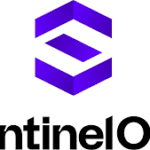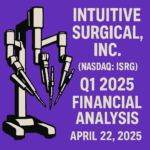Okta Inc. (OKTA) Stock Analysis

Okta (NASDAQ: OKTA) Stock Analysis
Sector/Industry: Software (Cybersecurity & Identity Management)
Analysis Date: March 1, 2025
1. Company Overview
Okta is a leading provider of identity and access management (IAM) solutions, enabling organizations to securely connect people and technology. Its cloud-based platform provides secure login, authentication, and directory services for employees, partners, and customers across various devices and applications.
- Core Products: Single sign-on (SSO), multi-factor authentication (MFA), user provisioning, API access management, and other IAM-related solutions.
- Customer Base: Enterprise clients across multiple industries (technology, financial services, healthcare, etc.), plus mid-market and SMB segments.
- Competitive Landscape: Okta competes with Microsoft (Azure Active Directory), Ping Identity, ForgeRock, and other identity/security providers.
2. Financial Performance
a. Revenue & Growth
- TTM Revenue: $2.53 billion
- Revenue Growth (YoY): ~16.84%
Analysis:
Okta has maintained solid top-line growth, though the rate has decelerated somewhat from its previous high double-digit levels. This growth is driven by increasing adoption of cloud-based identity solutions and expansion within existing enterprise customers.
b. Profitability
- TTM Net Income: -$39 million (Net loss)
- TTM EPS: -$0.34
- Profit Margin: -1.54%
Analysis:
Although Okta remains unprofitable on a GAAP net income basis, the net loss has narrowed. This reflects ongoing investments in R&D, sales, and marketing, balanced by scale benefits. Many software/SaaS peers also focus on growth over immediate profitability, relying on strong recurring revenue.
c. Margins
- Gross Margin (TTM): 76.12%
- Operating Margin (TTM): -5.41%
- EBITDA Margin (TTM): -2.09%
Analysis:
A ~76% gross margin is typical of SaaS-based software companies, reflecting high incremental margins on subscription revenue. Negative operating margin (-5.41%) indicates that Okta is still investing heavily in growth and R&D.
d. Free Cash Flow
- Operating Cash Flow (TTM): $638 million
- Capital Expenditures (TTM): -$10 million
- Free Cash Flow (TTM): $628 million
- FCF Margin (TTM): ~24.79%
Analysis:
Despite GAAP net losses, Okta’s free cash flow is strongly positive ($628M TTM), underscoring the typical SaaS dynamic of high non-cash expenses (stock-based comp, depreciation) and strong deferred revenue collections. A 24.79% FCF margin is impressive for an enterprise software player.
3. Balance Sheet & Liquidity
- Cash & Short-Term Investments: $2.25 billion
- Total Debt: $960 million
- Net Cash Position: $1.29 billion (about $7.52 per share)
- Equity (Book Value): $6.27 billion
- Working Capital: $769 million
- Current Ratio: ~1.34
- Debt / Equity: 0.15
Analysis:
Okta’s balance sheet is healthy, with a net cash position exceeding $1B. The debt-to-equity ratio (0.15) is low, suggesting limited leverage. This liquidity provides flexibility for continued investments in product development, acquisitions, or expansions.
4. Valuation
- PE Ratio (TTM): n/a (negative net income)
- Forward PE Ratio: 31.45
- PS Ratio (TTM): 6.00
- P/FCF Ratio (TTM): 24.69
- EV/Sales (TTM): 5.61
- EV/FCF (TTM): 22.64
Analysis:
While Okta’s trailing PE is not meaningful (negative earnings), the forward PE of ~31 suggests a premium for expected future profitability. The EV/Sales near 5.6 is not unusual for a growth-oriented SaaS company, especially one with robust free cash flow generation. Investors appear to be pricing in continued revenue expansion and margin improvements.
5. Market Performance
- 52-Week Price Change: +4.12%
- Beta (5Y): 1.03
Analysis:
Okta’s stock has risen about 4% over the past year, in line with broader software sector volatility. A beta around 1 indicates price movements roughly in line with the market, albeit the company has had episodes of higher volatility tied to growth stock sentiment.
6. Risks & Considerations
1. Competition: Identity and access management is highly competitive. Large players (Microsoft, Ping, etc.) can pressure Okta’s market share.
2. Profitability Path: While free cash flow is strong, GAAP profitability remains elusive, and some investors prefer consistent net income.
3. Security & Reliability: As a security software vendor, any breach or downtime could damage reputation and erode trust.
4. Macro Environment: Corporate IT budgets can tighten in economic downturns, potentially slowing subscription expansions or new deals.
5. Acquisition Integration: Past acquisitions (e.g., Auth0) require effective integration to realize synergies and avoid disruptions.
7. Conclusion
Pros:
- SaaS Growth & Sticky Revenue: Okta’s identity solutions are mission-critical, generating high recurring revenue and a strong net retention rate.
- Healthy Cash Flow: Positive free cash flow of ~$628M underscores the viability of the subscription model.
- Solid Balance Sheet: Over $1B in net cash offers flexibility for investments or strategic acquisitions.
Cons:
- GAAP Losses: Negative net income signals the need for continued cost discipline as Okta scales.
- Intense Competition: Larger rivals with integrated ecosystems (Microsoft, etc.) pose a strategic threat.
- Valuation Premium: Forward P/E near 31 suggests the stock is priced for strong future growth and margin improvements.
Final Note:
Okta remains a leading identity management provider with robust recurring revenue growth and a strong net cash position. While it’s not yet GAAP-profitable, it’s generating substantial free cash flow. Investors comfortable with growth-oriented, still unprofitable software names may find Okta’s leadership in IAM appealing. Nonetheless, competition and macro uncertainties could affect growth and profitability timing.
Disclaimer:
This summary is for informational purposes only and does not constitute financial advice. All investments involve risk, including possible loss of principal. Conduct your own due diligence or consult a licensed professional before making any investment decisions.





